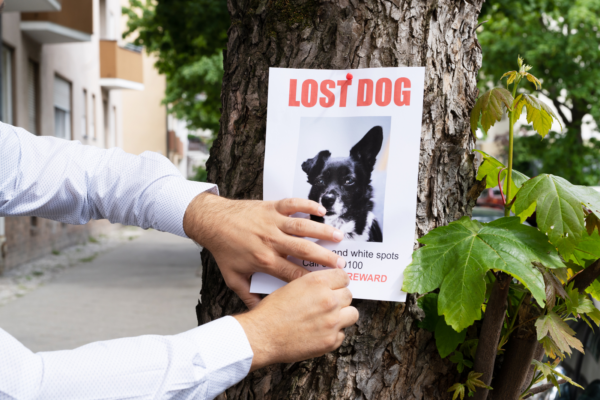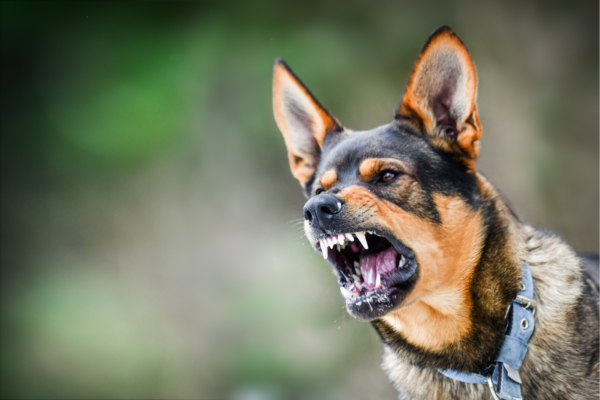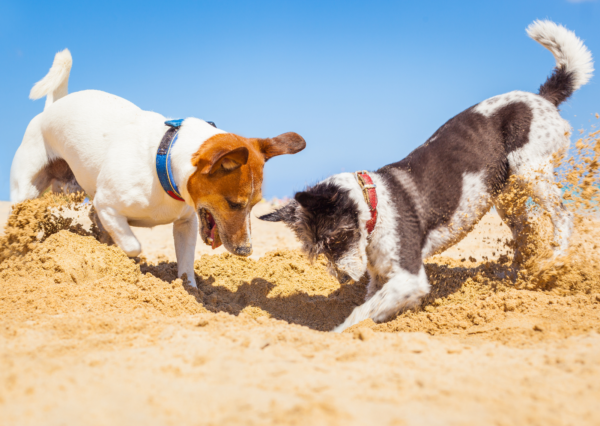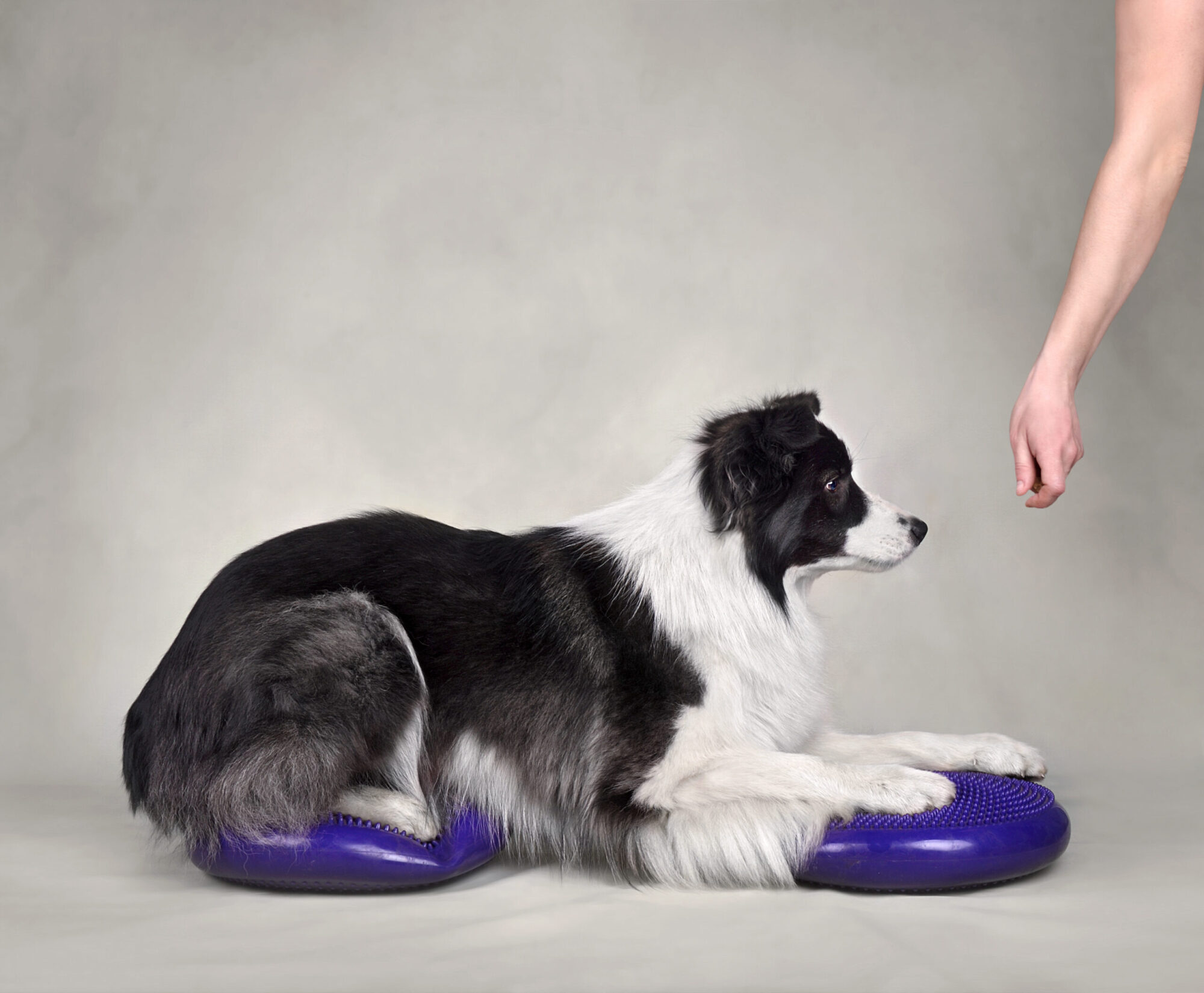Exit strategies: teaching your dog to use fitness equipment
I first heard about proprioception around the same time I started to train with positive reinforcement. To be more precise, I THOUGHT I was training with positive reinforcement. In my mind, giving lots of food qualified as “positive reinforcers” when in fact I was just limiting my dog’s choices by overwhelming her with tasty treats.
Do you know of those theme parks where you swing from tree to tree on well secured cables? Pretty safe right? But when you feel stuck dozen meters up high, it is not so easy to just let go and blindly trust that the karabiners won’t fail you.
Maybe that’s how my dog Cerise felt with what i was doing back then: carrying her so very gently and placing her on a gym ball. I was not actually restraining her physically once she was on it. I would then just keep my arm slightly under her belly (not touching her) in case she lost balance. At that time i genuinely believed “she can jump down whenever she wants to, she has a choice”. But did she really? In my mind, since there was no real danger (there was no way on earth that I would let her fall!), she should feel safe.
Please forgive me Cerise, i didn’t know any better…

To be fair, science based and positive reinforcement was not very main stream back then (at least in France…). I was one of “the good ones” just by not using intimidation or fear intentionally. But boy did I forget to consider the primal fear to fall or to be out of balance!
Of course proprioception work is not always about making the dog climb on fancy equipment, far from it. But when it does, let’s not forget that balancing on weird objects is a skill, and as all skills it needs to be properly taught to your dog.
1. TEACH THE APPROACH TO THE PIECE OF EQUIPMENT
First thing I want is for the dog to get familiar with the equipment. Maybe go around it, look at it, sniff it. I would then reinforce very little contact with the object: touching it or putting only one paw on it is enough.
2. TEACH AN EXIT STRATEGY RIGHT AWAY!
Once I reinforced the first approximations, I want to show to my dog where a safe place to exit the exercise is. When in doubt, a lot of dog will tend to jump on the ground on the opposite side of you. They will literally run away from you. This is something that I never want my dog to feel compelled to do. That’s why I want to teach them right away that:
It’s ok to want to step out
You can go down on my side or on an exit solution I arranged for you.
No matter how “easy” this seems to you, always show them one or several exit plans.
3. THEN ONLY TEACH HOW TO CLIMB ON IT
Because when you’re up in those trees, it too late to be realizing that you don’t know how to go back down!
Teaching multiple exit strategies will be essential when training advanced balance skills. You might want your dog to learn behaviors such as:
- turn around on a piece of equipment to access the safest exit – useful on high objects
- follow specific hand signals to choose a direction to jump on the ground – useful with discdog tricks such as the foot stall
- voluntary lean when ready to be carried – useful with working dogs that need to move on difficult terrain (search and rescue). On the video, Miette waits for my cue to lean on me, allowing me to carry her.
See also other posts:
June 30, 2023

Get Your Lost Dog Back Home Quickly: Follow These 12 Tips for Success
Vacations favor more frequent and longer walks with our furry friends. We travel, visit new places. Summer makes us loosen our brakes and allow our…
June 30, 2023

Managing Aggressive Dog Behavior: Tips for Peaceful Living
Living with an aggressive dog may seem challenging, but it can be peaceful and manageable with the right approach. One key aspect is to remain…
June 30, 2023

Unlocking the Secret to Successful Puppy Socialization: Quality over Quantity
Today, although the topic is very important, I will keep it brief. Socialization is a topic that could fill books or scientific papers. However, today…

